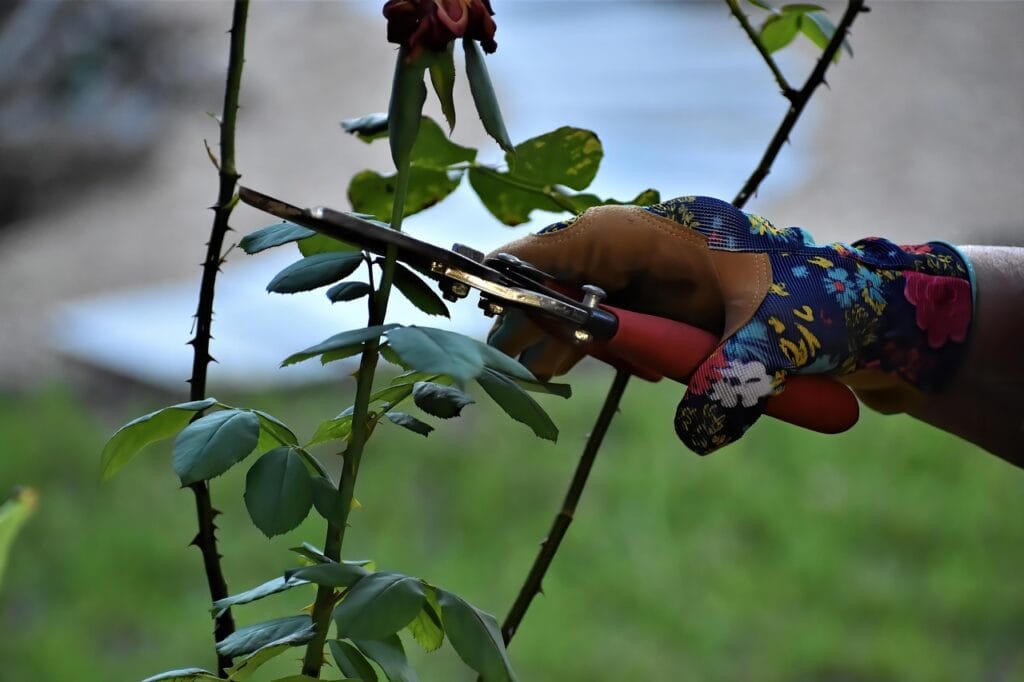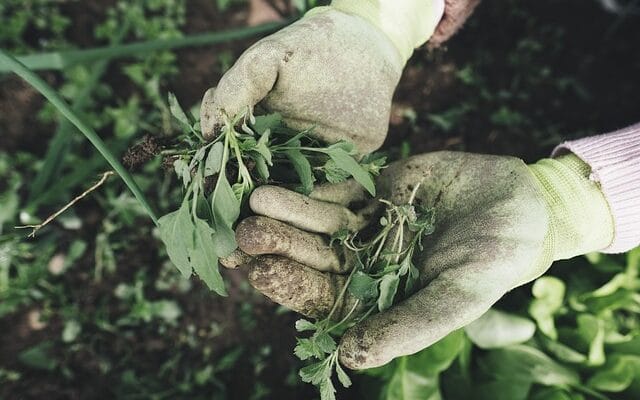Disclosure: This post may contain affiliate links, meaning we get a commission if you decide to make a purchase through our links, at no cost to you. See our full disclosure here.
Gardening is a journey of joy, an incredibly rewarding dance with nature. As a Certified Nursery Professional and seasoned gardener, I’ve spent countless hours getting my hands dirty and sharing my passion with others. I’m excited to partner with DirtDivaDiaries.com to bring you this guide to common gardening mistakes and how to avoid them.
13 Beginner Gardening Mistakes to Avoid
Gardening for beginners can feel like navigating a jungle of information. This guide will highlight the most common pitfalls and how to avoid them.
1. Over-watering
One of the most common mistakes new gardeners make is over-watering. It’s easy to get over-enthusiastic and drown your plants with love (and water). However, over-watering can lead to root rot, fungal diseases, and nutrient deficiencies. To avoid this, ensure your pots or garden beds have good drainage. You can check this by digging a hole and filling it with water. You’re good to go if the water drains within a few hours. If not, you must improve drainage by adding organic matter or building raised beds. Water only when the top inch of soil is dry to the touch, and use a soaker hose or watering can to deliver water directly to the soil, not the leaves.

2. Under-watering
Under-watering is another common mistake. It’s easy to forget about your plants, especially during hot summer days. Under-watering causes the plant’s leaves to wilt and droop, its growth to become stunted and slow, and ultimately, it can lead to the plant’s death. To avoid under-watering, set a regular watering schedule and stick to it. You can also use a self-watering system or mulch to help retain soil moisture.
3. Planting in the Wrong Location
Not all plants are created equal. Some love full sun, while others prefer shade. Some need lots of water, while others prefer dry conditions. Planting in the wrong location, where the sun is insufficient or the soil is poor, can stunt growth, resulting in low yields and potentially killing the plant. Research your plants’ needs before you select them. Consider factors like sunlight, soil type, and water requirements. You can typically find that information on plant tags, seed packets, and here at DirtDivaDiaries.
4. Ignoring Soil Health
Soil is not just dirt. It’s a living ecosystem that provides nutrients, water, and support to your plants. Ignoring soil health can stunt plants, cause nutrient deficiencies, and cause pest problems. To avoid this, test your soil to understand its composition and pH. You can then amend your soil with organic matter like compost or manure to improve its texture, drainage, and nutrient content.

5. Not Knowing Your Plants
Knowing your plants can help you avoid multiple beginner gardening mistakes. Each plant has its own unique needs and quirks. Some need regular fertilizing, while others prefer to be left alone. Some need regular pruning, while others prefer to grow wild. Not knowing your plants can lead to poor growth, low yields, and even death. Before planting them, it is essential to look into the specific needs of your plants to avoid this. Consider factors like sunlight, water requirements, and soil type. You can find this information on plant tags, seed packets, or online resources.
6. Starting Too Many Seeds/Plants at Once
Gardening for beginners can be exciting, and it’s easy to get carried away and start too many seeds or plants at once. But this can lead to overcrowding, which hurts all the plants. To avoid this, start small and gradually expand your garden as you gain experience. You can also try succession planting, which involves planting small batches of seeds or plants at intervals to ensure a continuous harvest. If you find too many plants crowding each other, thin them down to give the remaining plants room to thrive.
7. Neglecting Weeds
Weeds are the uninvited guests of the garden. They compete with your plants for nutrients, water, and sunlight. Neglecting weed control can cause suboptimal plant growth, reduced yields, and potentially the demise of crops. To avoid this, weed regularly, especially when weeds are young and small. You can also use mulch or other weed-control methods to help keep weeds at bay.
8. Pest and Disease Problems

Pests and diseases can wreak havoc on your garden. They can damage plants, reduce yields, and even lead to death. Inspect your plants regularly for signs of pests or diseases to avoid this. You can also use organic or natural pest control methods to help keep pests and diseases at bay. Check out our article on diatomaceous earth for more information on pest control methods.
9. Improper Pruning
Pruning is the art of removing unwanted or diseased plant parts to encourage healthy growth. Improper pruning can damage plants and reduce your harvest. Research your plants’ pruning needs before starting. You can find pruning information on plant tags, seed packets, and online resources.

10. Forgetting to Fertilize (or Over-Fertilizing)
Fertilizers are the plant’s food. They provide essential nutrients that help plants grow strong and healthy. Lack of fertilization can cause poor growth, low yields, and potentially plant death. Over-fertilizing can also be harmful, causing chemical burns and environmental pollution. Research the specific fertilizing needs of your plants before you fertilize them. This information is available on seed packets, plant tags, or online resources.
11. Not Providing Support for Climbing Plants
Climbing plants like tomatoes, cucumbers, and beans need support to grow vertically and produce healthy fruits. Not providing support can lead to poor growth and low production. To avoid this, offer support structures like trellises, stakes, or cages for your climbing plants.

12. Ignoring the Weather
Weather can be a fickle friend to the gardener. Frost, heat waves, and strong winds can affect plants, reduce yields, and cause death. To avoid this, be aware of weather forecasts and take precautions. For example, you can cover plants with frost blankets during cold snaps or provide shade during heat waves.
13. Lack of Patience
Gardening is a journey, not a destination. This is one of my favorite beginner gardening mistakes, mainly because it was and sometimes still is one I am guilty of. I would plant my seeds and look for plants the next day. It takes time, effort, and patience to see results. A lack of patience can lead to frustration and disappointment. Remember that gardening is a process. Enjoy the journey, and don’t be discouraged by early setbacks.
Conclusion
Gardening is a rewarding hobby that brings joy, health, and financial benefits. Avoiding these beginner gardening mistakes will get you well on your way to a thriving garden. Remember, gardening is a learning process. Don’t be afraid to experiment, make mistakes, and learn from them. Happy gardening!
What are your biggest gardening challenges? Share your experiences and questions in the comments below!
#dirtdivadiaries #beginnergardeningmistakes #gardeningforbeginners
Disclaimer: This post is for informational purposes only and should not be construed as health, wellness or nutrition advice. Please see our full disclaimers here.


Leave a Reply